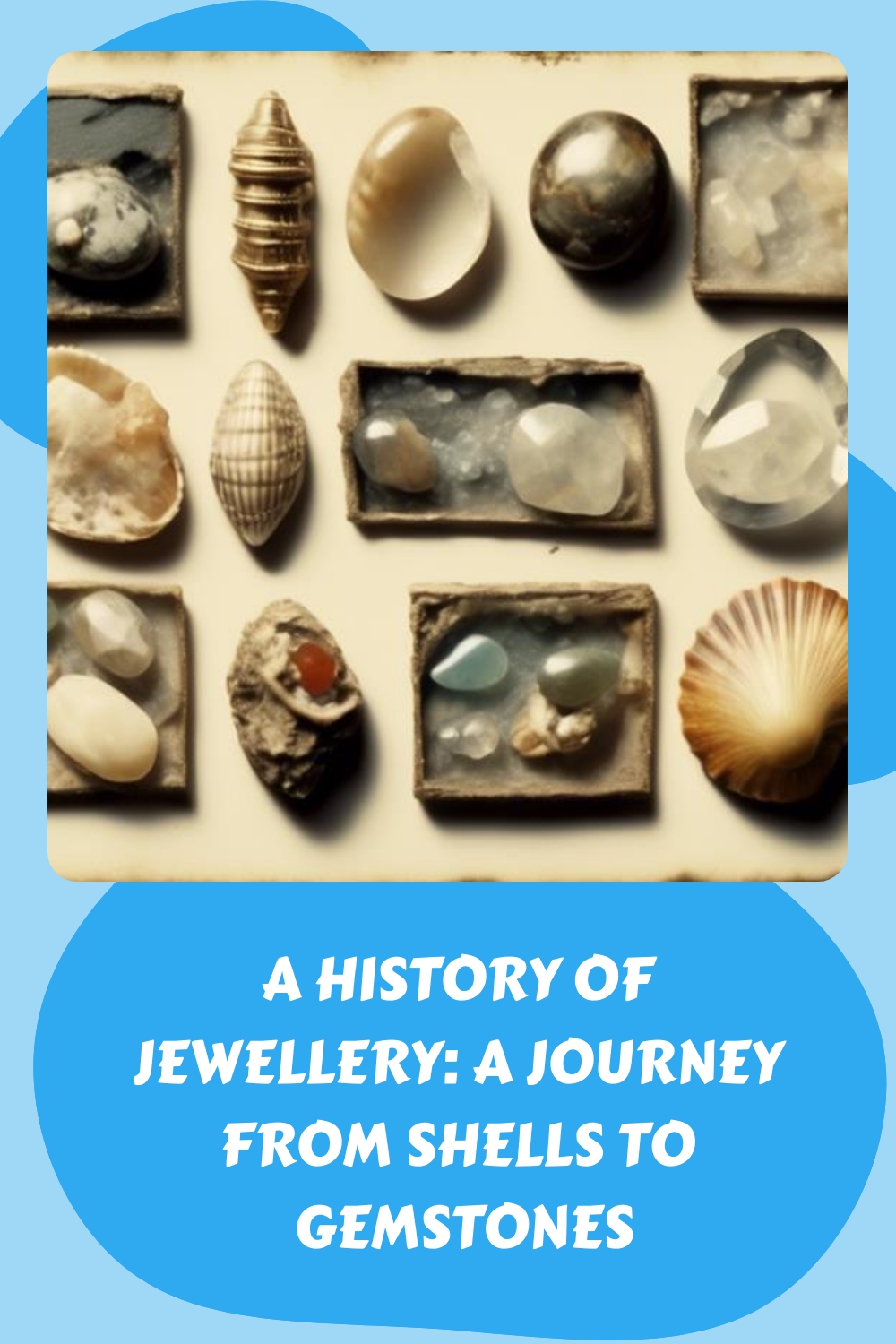Article Contents
- 1 Key Takeaways on the History of Jewellery
- 2 Early Adornment Origins
- 3 Beads and Trade Expansion
- 4 Gold and Gemstone Transformation
- 5 Symbolism and Stone Appreciation
- 6 Jewelry as Cultural Talismans
- 7 The Magical Allure of Crystals
- 8 How Does Tanzanite Fit Into the Historical Journey of Jewellery Evolution?
- 9 Further Reading About the History of Jewellery
In its myriad forms, jewellery has long been a hallmark of human civilization, offering insight into our ancestry’s cultural, economic, and technological narratives. From the earliest use of shells, bones, and stones, which served as decoration and markers of social and spiritual significance, to the opulent use of gemstones that symbolised wealth and power, the evolution of jewellery reflects a complex interplay of innovation and tradition.
Take a look at this brief history of jewellery, you will observe the transformation of raw, natural materials into objects of art and prestige. This journey is not merely one of aesthetic refinement but also one of human ingenuity, where the alchemy of earth’s resources meets the ambition of craftsmen and the desires of societies.
As we consider the subtle shifts and radical leaps in the design and function of jewellery over the millennia, one can’t help but wonder what secrets lie within the lustrous facets of our most treasured pieces—and what future transformations await the world of adornment. With each era, new materials, techniques, and cultural influences have shaped the evolution of jewellery, from ancient talismans to modern statement pieces. As we look ahead, the merging of traditional craftsmanship with cutting-edge technology promises to push the boundaries even further. Perhaps this next chapter in the story of adornment will involve unveiling estate jewelry collections that have been hidden away for generations, offering a glimpse into the past and inspiring the designs of the future.
Key Takeaways on the History of Jewellery
- Adornment has a long history, with the early use of shells and seeds representing the origins of jewellery.
- Beads played a pivotal role in the cross-cultural exchange of ornamental practices and materials, serving as currency and facilitating cultural connectivity.
- Gold and gemstones transformed the landscape of jewellery, leading to the emergence of goldsmithing and intricate designs.
- Gemstones hold both intrinsic beauty and symbolic significance, with each stone associated with specific qualities or powers.
Early Adornment Origins
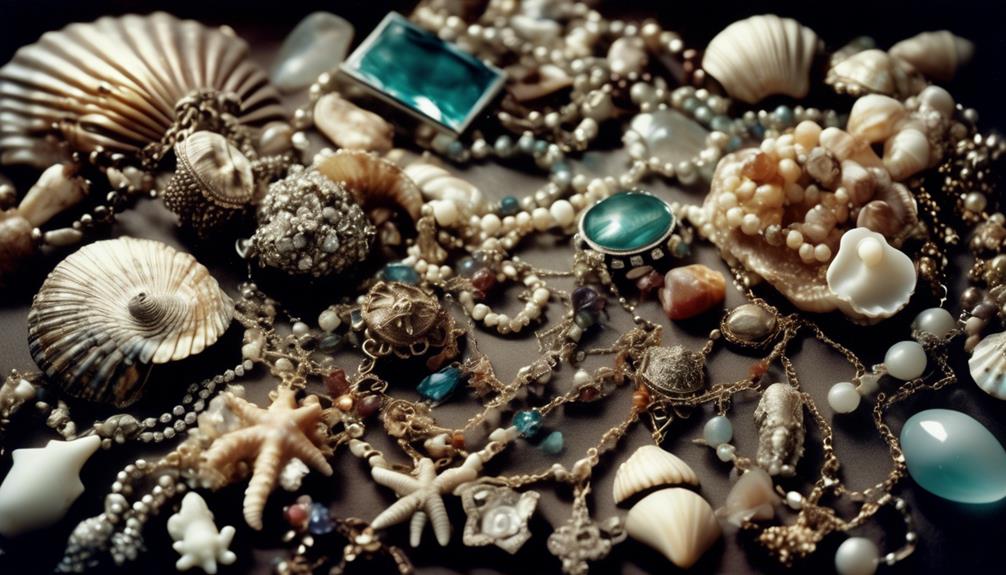
The genesis of adornment can be traced back to the early use of naturally sourced materials such as shells and seeds. These objects were selected for their intrinsic beauty, accessibility, and ease of manipulation. They served as the precursors to the sophisticated gemstone jewellery we recognize today.
The earliest evidence suggests a profound appreciation for the aesthetic qualities of organic forms. These adornments were not merely decorative items but also symbols of status, identity, and community affiliation.
Over time, the methods of embellishment evolved, reflecting the ingenuity of various cultures. They transformed raw, natural elements into complex adornments. This progression laid the foundations for the diverse array of ornamental practices that would ultimately flourish.
These practices led to the rich tapestry of jewellery-making traditions that span the globe.
Beads and Trade Expansion
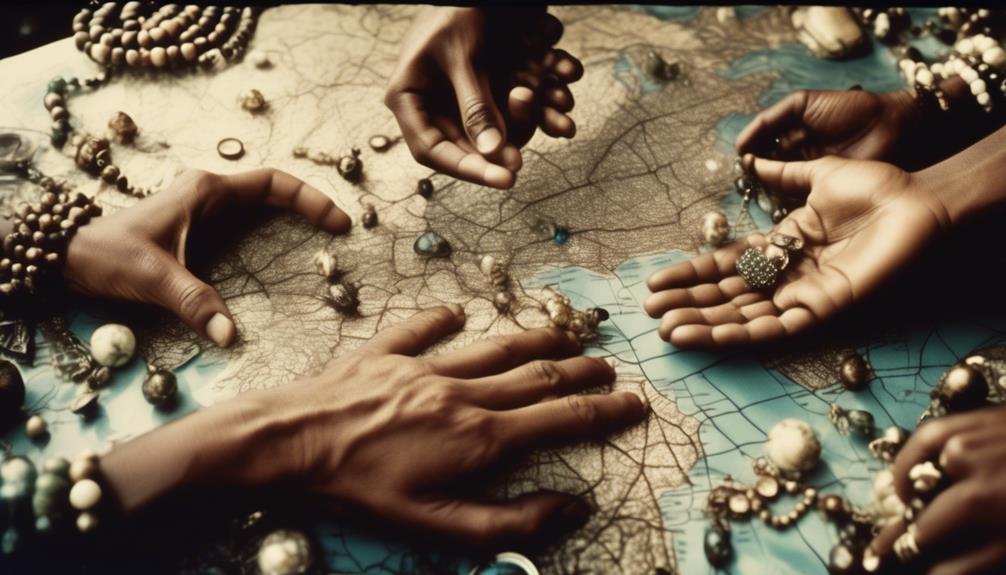
As trade networks expanded, so too did the reach and diversity of beads, which played a pivotal role in the cross-cultural exchange of ornamental practices and materials. Beadmaking techniques evolved significantly through this period, reflecting a synthesis of indigenous methods and the assimilation of new, foreign skills.
These small yet significant items were often at the heart of trade routes, serving not only as currency but also as a medium for cultural exchange. Beads became a universal language of adornment, connecting disparate civilizations through their shared appreciation of beauty.
As caravans and ships traversed continents and seas, they carried with them glass, stone, and eventually precious metal beads, weaving a rich tapestry of interaction that was as much about commerce as it was about cultural connectivity.
Gold and Gemstone Transformation
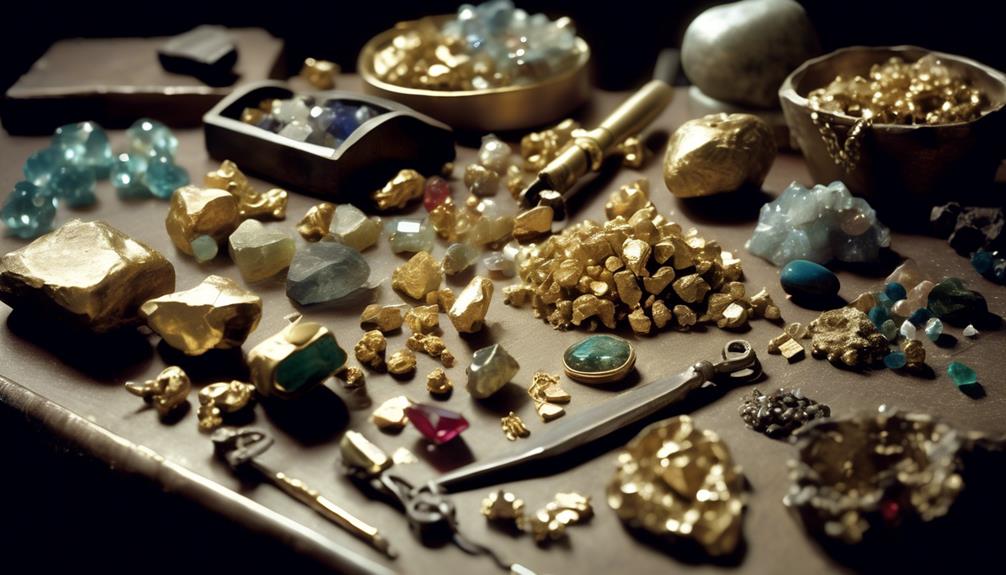
Building on the foundation laid by the expansion of beads and trade, gold and gemstones began redefining the jewellery landscape, offering new possibilities in adornment and craftsmanship. The art of gold and stone craftsmanship burgeoned, reaching unprecedented heights of intricacy and creativity. With its malleable and enduring qualities, gold provided an ideal medium for jewellers to express their artistry. At the same time, the historical significance of gemstones enriched their creations with both cultural narrative and aesthetic splendour.
- Emergence of goldsmithing and sophisticated cutting techniques
- Integration of precious gemstones into complex jewellery designs
- Symbolic and societal roles of gemstone-embellished jewellery
- Preservation of gold and gemstone artefacts as cultural heritage
- Advancements in gold alloying and gemstone setting practices
Symbolism and Stone Appreciation
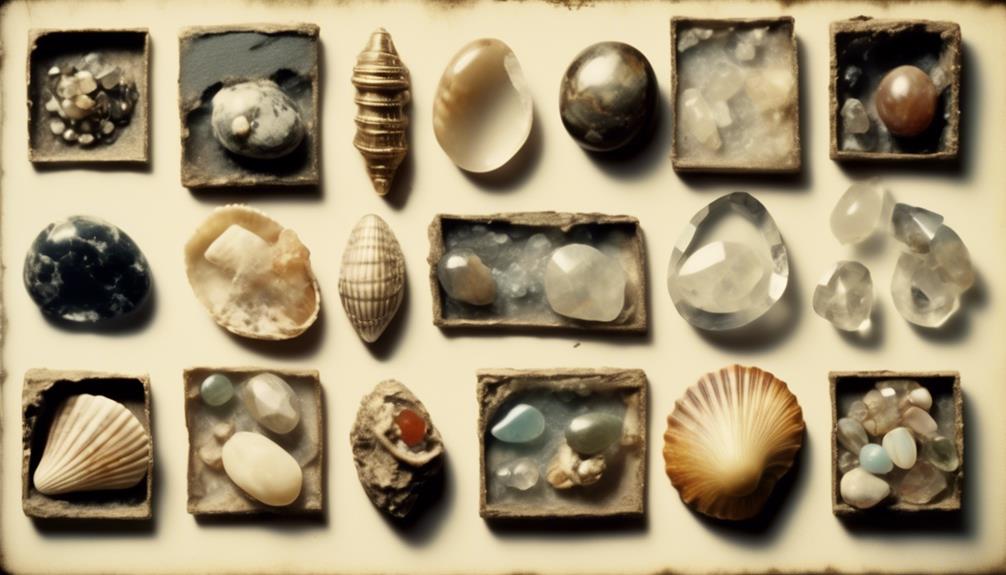
Throughout history, gemstones have been revered for their intrinsic beauty and symbolic significance, believed to bestow upon their wearers everything from protection to prosperity. The symbolic significance of gemstones is deeply rooted in cultural traditions and mythologies, with each stone often associated with specific qualities or powers. For instance, diamonds symbolise strength and invincibility, while emeralds are thought to confer wisdom and foresight.
Advancements in stone-cutting techniques have further enhanced the allure and potency of these treasures, allowing the natural beauty and colour to be showcased in once unimaginable ways. Skilful cutting can amplify a stone’s brilliance and reveal hidden hues, intertwining aesthetic appeal with the rich tapestry of symbolism that these gems carry.
Jewelry as Cultural Talismans

Jewellery has long served as a cultural talisman, embodying the beliefs, traditions, and values of societies across the globe. These adornments are not merely decorative; they are imbued with profound cultural significance and often function as protective amulets. They carry with them the weight of history and the aspirations of those who wear them, acting as silent guardians and symbols of collective identity.
- Cultural Significance: Each piece tells a story of heritage and communal values.
- Protective Amulets: Jewelry as a means of safeguarding the wearer from harm.
- Symbolic Representation: Talismans encapsulate a society’s ethos and spiritual beliefs.
- Identity and Status: Adornments signify social standing and personal affiliations.
- Ritualistic Use: Employed in ceremonies to uphold tradition and invoke blessings.
The Magical Allure of Crystals
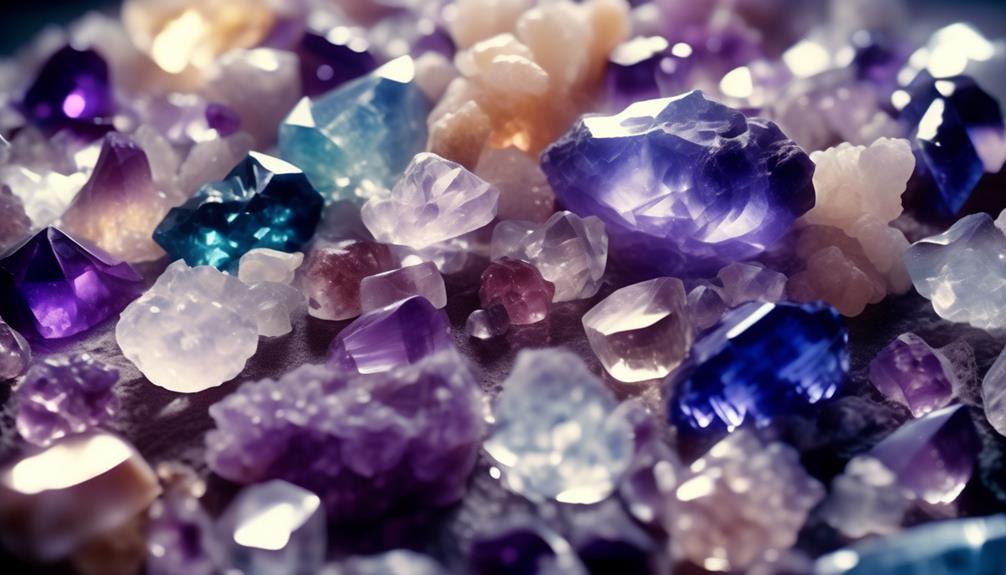
Reflecting the deep-seated belief in the protective and mystical properties of adornments, crystals have captivated human fascination both as natural wonders and as potent symbols in jewellery.
Historically, the allure of crystal formations extends beyond mere ornamentation, suggesting an ancient appreciation of their aesthetic and perceived healing properties. The intricate lattice structures that characterize crystals are the result of millennia of geological processes, each pattern unique and often imbued with specific energies by various cultures. These attributes have been meticulously chronicled and studied, offering insights into traditional and contemporary beliefs surrounding crystals.
As adornments, crystals serve not only to beautify but also to symbolize a connection with the earth and its innate powers, embodying freedom from the mundane through their otherworldly sparkle and purported metaphysical qualities.
How Does Tanzanite Fit Into the Historical Journey of Jewellery Evolution?
Tanzanite, a relatively recent discovery in the world of gemstones, has revolutionized the historical journey of jewellery evolution with its enchanting blue-violet hues. Its rarity and uniqueness make it a sought-after treasure, and buying tanzanite for the perfect gemstone adds a modern touch to the timeless art of fine jewellery creation.
Further Reading About the History of Jewellery
1: Victoria and Albert Museum: https://www.vam.ac.uk/articles/a-history-of-jewellery
2: Wikipedia: https://en.wikipedia.org/wiki/Jewellery
3: International Gemological Society: https://www.gemsociety.org/article/myth-magic-and-the-sorcerers-stone/
4: Encyclopaedia Britannica: https://www.britannica.com/art/jewelry/The-history-of-jewelry-design
5: Time & Treasures: https://timeandtreasures.com/a-journey-through-the-history-of-jewellery/

